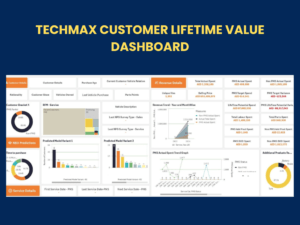Retaining consumers has become just as crucial as getting new ones in today’s competitive industry. In addition to being a reliable source of income, loyal consumers promote the brand and attract new clients by word-of-mouth.
The question arises on how can companies effectively foster this loyalty.
Utilizing customer experience (CX) data and analytics to better understand and optimize the elements that influence client loyalty is the key to the solution.
Understanding Customer Experience Data and Analytics
Customer experience analytics involves collecting and analyzing data about every interaction a customer has with a brand. Numerous sources, including consumer surveys, social media, website interactions, past purchases, and customer service encounters, can provide this data. Businesses can learn about consumer preferences, habits, and pain points by examining this data.
Analytics on customer retention are essential for growing your business. You can reduce churn by examining data regarding your company’s client retention.
Also read: Churn Analysis: Keeping Customers Engaged with Data Insights
Data analytics is essential for retaining customers as it offers useful insights that organizations can use to better understand and enhance the customer experience. Here are a few main advantages:
- Predictive Insights: Organizations can forecast consumer trends and behavior by using data analytics. Companies can prevent customer turnover by anticipating future demands and proactively addressing prospective concerns by finding patterns in consumer data.
- Personalization: Companies can craft incredibly tailored experiences by analyzing consumer data. Because they feel appreciated and understood, clients are more satisfied and loyal when this level of customization is provided.

- Targeted Analytics: It is used in targeted marketing to segment clients according to their preferences and behaviors. As a result, marketing campaigns can be targeted more precisely, resulting in the correct messages reaching the right people.
- Identifying At-Risk Customers: Companies can determine which customers are most likely to leave by looking at customer interactions and behaviors. Timely intervention strategies to re-engage these clients are made possible by early identification.
- Improved customer service: Data analytics can identify frequent problems and opportunities for better customer service. This makes it possible for companies to improve the support services they offer, which raises customer happiness and retention.
- Measuring Impact: Analytics provide instruments for measuring how well customer retention strategies are working. Businesses can optimize retention by continuously refining their tactics through the monitoring of key performance indicators (KPIs).
Using Analytics and Data to Measure Success
It’s critical to use data and analytics to regularly track and assess the impact of your tactics on customer loyalty to make sure they are working. To monitor, these are the following key performance indicators (KPIs):
- Customer retention rate: The proportion of clients that stick with you over an extended period is known as your customer retention rate.
- Customer Lifetime Value (CLV): The entire amount of money a company can anticipate making from a single client over the course of that client relationship.
- Net Promoter Score (NPS): Indicates the likelihood that consumers will tell others about your brand.
- Customer Satisfaction Score (CSAT): A measure of how satisfied customers are with your products or services.

By regularly monitoring these KPIs with data and analytics, businesses can adjust their strategies as needed to ensure they are effectively driving customer loyalty. Techmax analytics dashboard helps companies maximize their data stack to improve sales and overall performance.
Conclusion
Analytics and statistics on the customer experience are important instruments in the long-term client retention game. Businesses can create enduring relationships with their consumers by comprehending the primary factors that influence customer loyalty and putting specific plans into place to improve these areas. The result is a devoted clientele that generates income and aids in drawing in new business via favorable word-of-mouth.


